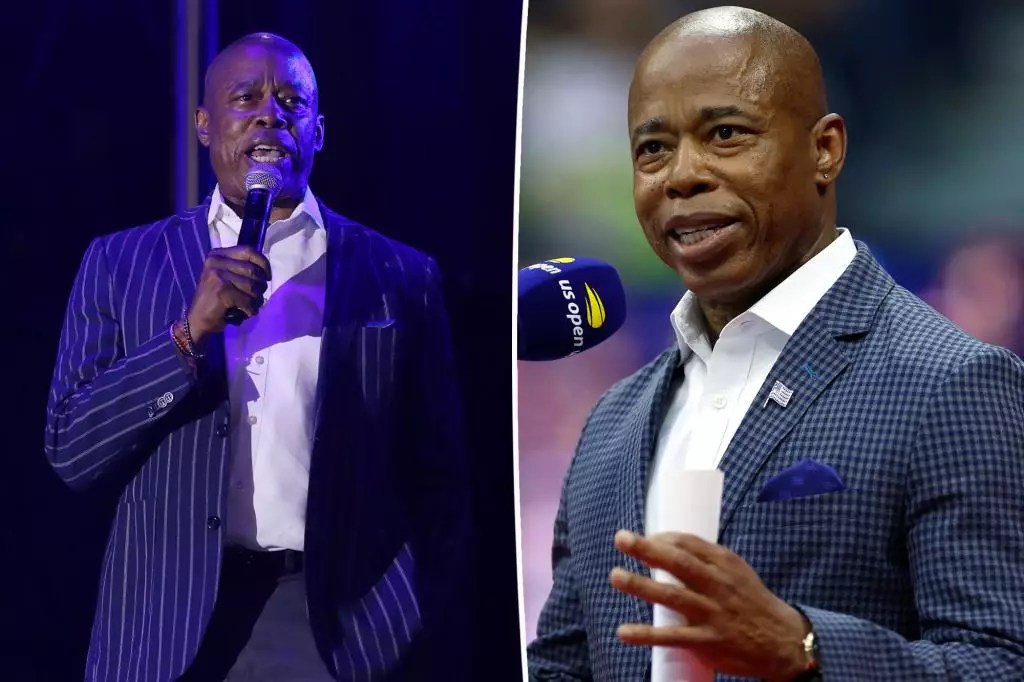In today’s political and social landscape, the act of fundraising transcends mere financial support; it morphs into a display of influence, social savvy, and strategic positioning. When political figures like Mayor Eric Adams venture into high-profile circles, they are not just seeking personal support but are embedding themselves deeper into networks that shape policy and perception. Adams’s recent weekend in the Hamptons, engaging with billionaires, entrepreneurs, and social elites, exemplifies this intricate dance of power and privilege. The carefully curated events—ranging from star-studded birthday parties to exclusive fundraisers—are more about reinforcing one’s presence among the influential than about the charitable cause itself.
This approach reveals how modern leadership often hinges on social capital accumulation. The gatherings serve as arenas where alliances are struck, reputations bolstered, and political capital expanded—often under the guise of supporting local businesses or celebrating milestones. The spectacle of Adams rubbing shoulders at billionaire Wayne Boich’s estate or attending Noah Tepperberg’s birthday bash underscores a trend: leaders leverage social events not merely for personal pleasure but as strategic fixtures to solidify their authority and reach across different spheres of influence.
The Interplay of Gender, Class, and Power in Elite Circuits
Events frequented by Adams and other notable figures also cast light on the gendered and classed dimensions of power. The social scene in places like the Hamptons—long considered a playground for the wealthy and privileged—serves as a microcosm of societal stratification. The mixture of celebrities, financiers, and hospitality moguls creates a curated environment where social hierarchies are reinforced and reaffirmed. The presence of high-profile personalities such as Robin Thicke, Adrien Brody, and influential entrepreneurs like Gary Vaynerchuk underscores that these gatherings are as much about social currency as they are about entertainment.
This convergence of power players often blurs the boundaries between public service and private interest. When a mayor spends time at private events with business magnates, it begs questions about the influence of financial elites on policy. The image of Adams attending a birthday party where a reggae band performs unexpectedly or a star sings a Bob Marley cover speaks volumes about the performative nature of these social scenes. They serve as moments of subtle diplomacy, where cultural touchpoints and celebrity appearances foster a sense of camaraderie that can translate into political support or policy influence.
The Politics of Visibility and Strategic Social Capital
The narrative surrounding Adams’s attendance at these events is carefully crafted by his spokesperson: his visits are described as purposeful, aimed at supporting local businesses and recognizing his efforts in running the city. Yet, underlying this official line is the recognition that visibility among the affluent and influential is essential for contemporary politicians. These moments of social interaction are not casual; they are calculated opportunities to showcase accessibility, relatability, and commitment to economic growth.
Such appearances feed into a broader culture where political figures are expected to be part of the social fabric of the elite. In a city like New York, where networking can be as crucial as policy, maintaining a presence in these circles becomes a strategic imperative. It’s about creating a narrative that a leader is both a competent administrator and a social navigator who understands the values and aspirations of the power class.
The Culture of Excess and the Modern Power Elite
The weekend’s events also paint a vivid picture of a culture that thrives on excess—luxury parties, star-studded performances, and exclusive gatherings. This spectacle feeds into a broader narrative about the modern power elite: that influence is often reinforced through displays of wealth and cultural capital. From Robin Thicke’s surprise performance to the intimate serenades by talented singers, the concerts and parties serve as immersive experiences that strengthen social bonds.
Interestingly, these events are intertwined with themes of philanthropy and community support—at least officially. The spokesperson’s remarks about supporting local entrepreneurs illustrate a duality: creating a veneer of community orientation while engaging in displays of conspicuous consumption and social capital building. This duality is a hallmark of contemporary elites—touting their social responsibility while reveling in the privileges their status affords them.
What emerges from such high-society circles is a portrait of modern influence: one that hinges on visibility, strategic relationship-building, and the subtle negotiation of power. These events, though cloaked in celebration and entertainment, serve as crucial nodes in the complex web of elite networks that shape political realities, economic policies, and social narratives. In this arena, influence is not just about policies passed or votes gained; it’s about social positioning—an ongoing performance that reaffirms the ladders of power and privilege in our society.
